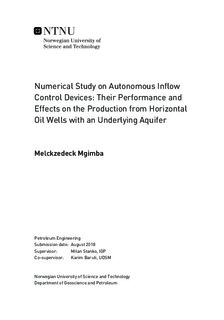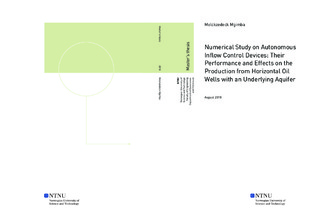| dc.description.abstract | The study of Autonomous ICDs was done as the comparative study with passive ICDs, whereby the horizontal wells completed with ICDs, AICDs, and AICVs were perforating in four different numerical reservoir models including heavy oil reservoir, thin oil reservoir, low viscous oil reservoir, and homogeneous reservoir. These cases were run in the Eclipse simulator and their results were compared with the open hole in each reservoir model.
The results show the installation of Autonomous ICDs (AICDs and AICVs) increased more oil when compared to the passive ICDs as it found for three cases, the installations of DFCs (ICDs, AICDs, and AICVs) reduce the water inflow in the wellbore, and also the installations of DFCs increase the production time when compared to the open hole. | |

